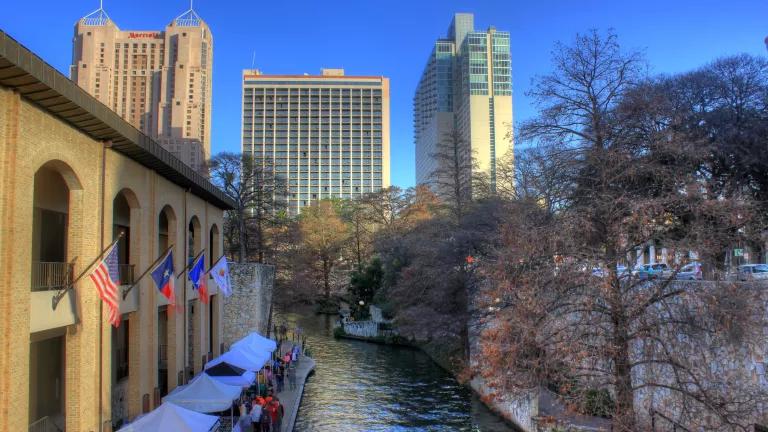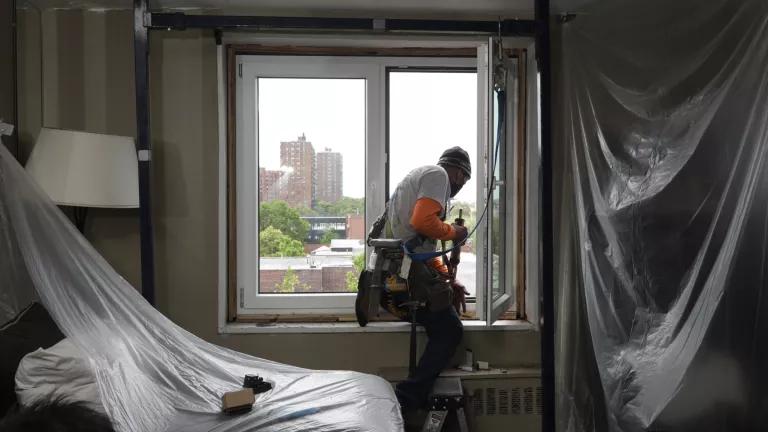San Antonio Picks Up the PACE to Fund Efficient Buildings

This blog was co-authored with Adil Chowdhury, Climate Advisor to the City of San Antonio.
The idea behind the American Cities Climate Challenge is to give the 25 participating cities the resources they need to accelerate their efforts to tackle the climate crisis. With support from the Climate Challenge, San Antonio is now speeding toward its goal to reduce building energy consumption with the City Council’s vote today to establish Property Assessed Clean Energy (PACE) financing.
The name may sound complicated, but PACE is actually a simple, common-sense program that will make it practical for San Antonio’s building owners to invest in building improvements now and reap the benefits of energy savings over time.
With nearly half of the country’s energy consumption stemming from heating, cooling, lighting, and operating buildings, mitigating climate change by making buildings more energy efficient is a no-brainer. Along with avoiding the need to use fossil fuels to power buildings (and the associated climate and other pollution), smarter energy use also lowers utility bills and increases comfort. But even when the long-term benefits of improvements outweigh the upfront costs, financing these types of projects can be a barrier.
Enter PACE.
Low-cost projects, long-term wins
PACE is a type of entirely voluntary financing designed to make it easy for property owners to pay for water conservation upgrades, energy-efficiency improvements, and retrofit their buildings to use renewable energy, for example, by installing solar panels. A local PACE program pays for 100 percent of the upfront costs, which the owner repays with interest over a period of up to 30 years via an assessment added to the building’s property tax bill. Utility cost savings from the upgrades often equal or exceed the amount of the assessment, resulting in positive cash flow right off the bat. Plus, the improvements can increase the building’s value and marketability. If the building gets sold, the PACE obligation transfers, along with other property taxes, to the new owner.
All sorts of improvements are eligible: lighting upgrades, heating and cooling systems, insulation, water pumps, solar panels, electric vehicle charging stations… the list goes on. The program can benefit multiple building types, too. In San Antonio, owners of commercial, industrial, non-profit, and large multifamily residential properties with five or more units will be eligible for the PACE program.
In addition to helping San Antonio meet its climate goals, PACE financing of building improvements has the potential to increase the city’s resilience to natural disasters, reduce carbon emissions, improve air quality, and create jobs in the local workforce.
Long story short: PACE effectively eliminates some of the cost barriers to a more livable future.
PACE-Setters
The Texas legislature passed the PACE Act in 2013, allowing for the creation of local PACE programs. Since then, over 35 counties and cities in the Lone Star State have implemented PACE programs, resulting in 26 finished projects valued at over $100 million in loans.
Texas and San Antonio are in good company. Three other cities participating in the Climate Challenge are also pursuing a new or expanded PACE program: Atlanta, Columbus, and Pittsburgh. Other Climate Challenge cities, such as Washington, D.C., already have PACE programs in place. Zooming out even farther, twenty states currently have active PACE programs, while several others have legislation under development.
In San Antonio, PACE was identified as a key strategy in the City’s 2019 Sustainability Plan, as well as the SA Climate Ready Plan that was adopted by City Council in October 2019. Many businesses have been requesting a local PACE program and the Climate Challenge has directly supported the City through research and efforts to engage interested parties to advance the adoption of PACE. It will continue to do so as the City explores additional policies to achieve a more efficient building stock – including opportunities to measure, report, and compare energy use in commercial buildings and potential ways to accommodate solar panels and electric vehicle charging stations in new construction.
In the meantime, now that the City Council has given its stamp of approval, San Antonio’s building owners can start picking up the PACE.


